David Bushnell: Revolutionary Engineer, Submarine Innovator, and Unsung Hero
David Bushnell as imagined by Nations & Cannons
David Bushnell was born on August 30, 1740 in Saybrook, Connecticut into a farming family. As the oldest of five children, he was expected to take over the family farm when he came of age. David, however, had other ideas. When his father died, David sold his share of the farm to his brother and enrolled at Yale College in 1771. At 31, David would have been nearly a decade older than most of his classmates, which included future Patriot spies Nathan Hale and Benjamin Tallmadge, but he was undaunted in his studies. He had a knack for engineering, and conducted experiments with gunpowder, eventually developing a reliable method for detonating it underwater. David then directed his efforts towards building a device that could carry and plant these explosives- a submarine. In early 1775, with the help of his brother, Ezra, and Issac Doolittle, David built the Turtle, a one-seat submersible that could attach naval mines to enemy ships.
Following the Battles of Lexington and Concord, Yale began to form revolutionary regiments and formally supported the second Continental Congress. David graduated in June of 1775, and continued his experiments with the Turtle. One of his Yale colleagues, Dr. Benjamin Gale, wrote to Benjamin Franklin about the vessel, and Franklin visited the test site in October of that year. This put Bushnell on the radar of George Washington and Congress, who took interest in using the Turtle against the British.
After a year of testing, Turtle’s first mission was set for September 6, 1776. The submarine was to plant mines on the hull of the British flagship Eagle in New York Harbor. The plan ultimately failed. Ezra Bushnell, who had trained to pilot the vessel, fell ill, and was replaced at the last minute by Sergeant Ezra Lee. Lee had trouble controlling the Turtle, and was unable to attach the mine to the Eagle. Fearing he was spotted by the British, Lee fled, dropping the mine behind him. While the mission was unsuccessful, Bushnell’s bomb did detonate underwater, proving that such an attack was at least possible.
Later that fall, following the execution of Bushnell’s former classmate Nathan Hale, Lee was sent on a second mission in the Turtle. This time, he would target three British frigates anchored near Manhattan. Unfortunately, this attempt also failed. Still, George Washington called the plan “an effort of genius”. On October 9th, the British sunk the Patriot sloop carrying the Turtle. David was able to salvage his submarine, but it was never used again.
With the Turtle out of commission, David returned to perfecting his underwater mines. They were used in an attack against the HMS Cerberus and in an attempt to interrupt a British fleet outside of Philadelphia. Both plots were ultimately unsuccessful.
David continued to serve in the Continental Army throughout the war. He was captured by the British in May of 1779, but was freed in a prisoner exchange orchestrated by Israel Putnam not long after. Later that year, Bushnell was granted a position as captain-lieutenant in the Corps of Sappers and Miners, an engineering division. He was promoted to captain in 1781, and participated in the Siege of Yorktown. David was discharged from service in 1783.
David went on to become one of the original members of the Society of the Cincinnati, and may have spent time working in France. In his later years, he settled in Georgia under the name David Bush, where he worked as a teacher and doctor. David Bushnell died in 1826, and was buried in an unmarked grave in Warrenton, Georgia.
Works Cited
“David Bushnell.” George Washington's Mount Vernon, www.mountvernon.org/library/digitalhistory/digital-encyclopedia/article/david-bushnell/.
“David Bushnell and His Revolutionary Submarine: Connecticut History: a CTHumanities Project.” Connecticut History | a CTHumanities Project, 3 Sept. 2019, connecticuthistory.org/david-bushnell-and-his-revolutionary-submarine/.
“Founders Online: To Benjamin Franklin from Benjamin Gale, 7 August 1775.” National Archives and Records Administration, National Archives and Records Administration, founders.archives.gov/documents/Franklin/01-22-02-0087.


